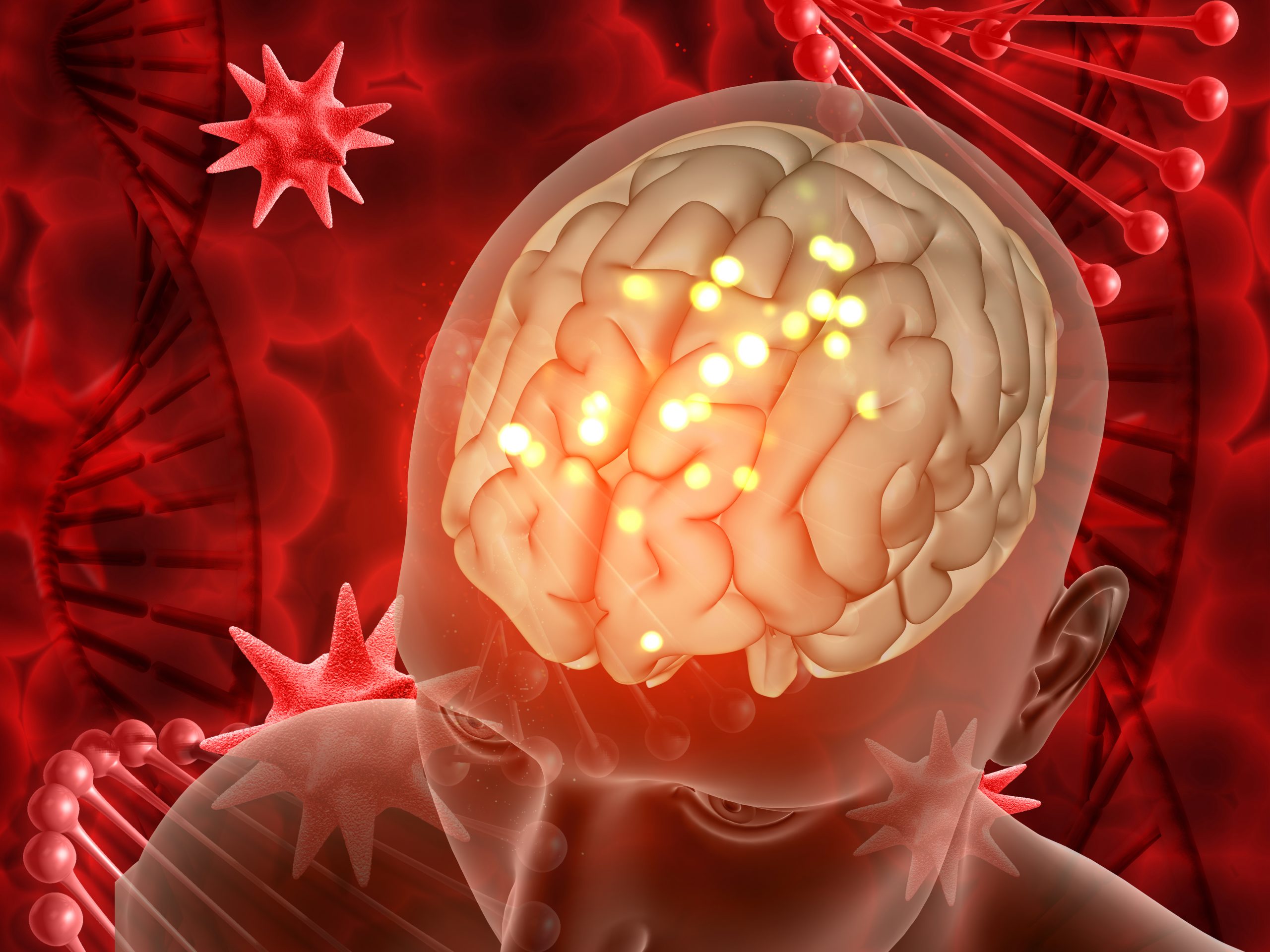

An emerging class of immunotherapy medications may be able to be used to treat the aggressive brain cancer glioblastoma, and a recent study reveals that two particular cancer cell mutations may cooperate to help hide tumors from the immune system. The study is published in Cell Reports.
Together with Franziska Michor, Ph.D., a computational biologist at the Dana-Farber Cancer Institute in Boston, Michalina Janiszewska, Ph.D., a cancer biologist at The Herbert Wertheim UF Scripps Institute for Biomedical Innovation & Technology, examined glioblastoma samples from 17 patients’ tumors.
The team used a combination of computational and statistical methods together with single-cell genetic mutation-highlighting microscopy techniques. The information showed a blatant signal: the invasion of anti-inflammatory white blood cells called macrophages into the tissue was predicted by a tumor’s increased frequency of cells with more than six repeats of each of two well-known cancer genes, EGFR and CDK4. According to Janiszewska, the ones that invade numerous brain tumor samples are known to reduce inflammation, which can protect cancer from an immune response.
One emerging class of medications targets these macrophages, although preliminary small studies indicate they may not be sufficient for treating glioblastoma. She suggested that concentrating on the subset of people who would benefit more would provide different outcomes.
“Our study suggests that using simple genetic testing and measuring tumor cellular diversity could, in the future, identify patients who would respond to therapies targeting these specialized pro-tumorigenic immune cells,” Janiszewska said.
The most typical kind of brain cancer is glioblastoma, which spreads quickly. New therapeutic options are required because patients typically survive for less than one and a half years after being diagnosed. In the United States, the condition affects about 12,000 people a year.
CSF1R inhibitors are a new class of cancer immunotherapies that target macrophages. Turalio was the first to be authorized by the American Food and Drug Administration in 2019. The ability to foresee which patients may respond to such medications the most is required, according to her.
“There were trials of these therapies, but they looked like they didn’t provide benefit to the patients. It would be good to go back to the trial to see if we could tell the difference between the responders and the non-responders,” she added.
Janiszewska focuses on describing the “microenvironment” of malignancies. This examines the variety of cells, tissue types, immune systems, and other elements that affect cancer’s development and dissemination across the body. It’s a data-intensive new front in the fight against cancer that combines lab research, computational biology, and computer science to help create more specialized, effective cancer treatments.
From here, Janiszewska hopes to work with groups that managed the early clinical trials of glioblastoma immunotherapy to examine tissue samples. In order to learn more about the process that causes those two mutations in glioblastoma to attract macrophages that encase tumors, she also hopes to create mice models of those abnormalities.
“This study definitely allows us to see that there is a connection between the genetic diversity of an individual region of the tissue and the tumor microenvironment,” Janiszewska said.
more recommended stories
 Gestational Diabetes Risk Identified by Blood Metabolites
Gestational Diabetes Risk Identified by Blood MetabolitesKey Takeaways (Quick Summary for Clinicians).
 Phage Therapy Study Reveals RNA-Based Infection Control
Phage Therapy Study Reveals RNA-Based Infection ControlKey Takeaways (Quick Summary) Researchers uncovered.
 Pelvic Floor Disorders: Treatable Yet Often Ignored
Pelvic Floor Disorders: Treatable Yet Often IgnoredKey Takeaways (Quick Summary) Pelvic floor.
 Urine-Based microRNA Aging Clock Predicts Biological Age
Urine-Based microRNA Aging Clock Predicts Biological AgeKey Takeaways (Quick Summary) Researchers developed.
 Circadian Control of Neutrophils in Myocardial Infarction
Circadian Control of Neutrophils in Myocardial InfarctionKey Takeaways for HCPs Neutrophil activity.
 E-Cigarette Use and Heart Attack Risk in Former Smokers
E-Cigarette Use and Heart Attack Risk in Former SmokersKey Takeaways for Clinicians and Nurses.
 36-Week Pre-eclampsia Screening May Reduce Term Risk
36-Week Pre-eclampsia Screening May Reduce Term RiskA New Preventive Strategy for Term.
 Cardiovascular Risk and Sudden Cardiac Death in Diabetes
Cardiovascular Risk and Sudden Cardiac Death in DiabetesRising Sudden Cardiac Death (SCD) Risk.
 Poor Kidney Function and Alzheimer’s Biomarkers Explained
Poor Kidney Function and Alzheimer’s Biomarkers ExplainedPoor kidney function may influence levels.
 Walking Speed Before Hip Replacement Predicts Recovery
Walking Speed Before Hip Replacement Predicts RecoveryNew Evidence Points to a Simple,.

Leave a Comment